It was the third day of the war ...
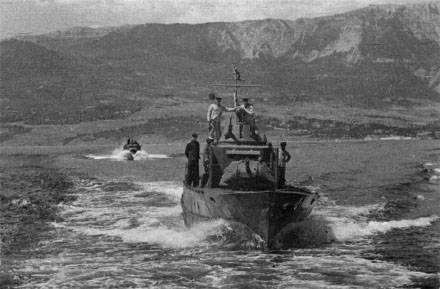
In the south, Russian wedges on Romanian territory. Allies have chaos and confusion. ” One of the leaders of the Third Reich, the Minister of Public Education and Propaganda, Joseph Goebbels, made this entry in his personal diary.
“Eka Nepal,” the military lovers will say. stories. “When the Red Army entered Europe, he had such marks on the top ten for the week!” Indeed, it was rare to surprise anyone with such events in 1944: the entry of Soviet troops into the allies of Nazi Germany became a matter of course.
But before the above entry is the date of "28 June 1941 of the Year", that is, since the beginning of World War II, not even a week has passed. A bridgehead captured by Soviet sailors, border guards and fighters 51 th Perekop Division on the right bank of the Danube, was already 75 kilometers along the front and several kilometers deep into Romania!
The fascist bonzes had something to think about ...
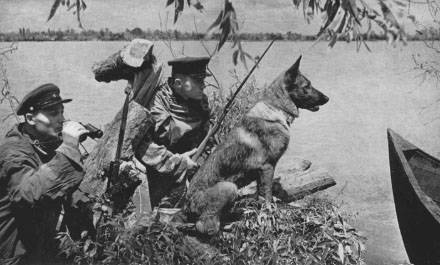
When to get ready to fight seriously
22 JUNE 1941 at 4.15 Romanian guns opened fire throughout the Soviet coast of the Danube. Infantry units assigned to capture the beachhead rushed from shelters to the water's edge.
And then something unexpected happened for the aggressor: as early as 4.18 separate ships snapped and part of the coastal batteries - the Danube Military flotillawho fulfilled the order of the People's Commissar of the Navy Admiral Kuznetsov that came at night, she met the war in full combat readiness.
In 4.20 spoke all its trunks. By half past four the return fire was so strong and organized that the Romanians after some time had to stop the shelling of Soviet territory. Their infantry could not even reach the middle of the river. Not a single enemy soldier entered our coast, and anti-aircraft gunners shot down three Romanian aircraft!
... By the summer of 1941, the Danube military flotilla had 5 river artillery monitors carrying two 130-mm and three 45-mm guns, 22 armored boats, 7 river minesweepers, one minelayer and about two dozen auxiliary vessels, including floats hospital and staff ship. In addition, the flotilla consisted of a separate anti-aircraft artillery division, machine-gun and rifle guard companies, six coastal batteries with guns of various calibers and a separate squadron, which had fourteen Chaika I-153 fighters. The commander of the flotilla was Rear Admiral Nikolai Osipovich Abramov.
At the beginning of hostilities, the naval division of the 79 frontier detachment of the NKVD troops passed into its operational control. He had four “sea hunters” armed with 37-mm guns and, with his draft, capable of maneuvering on the Danube, as well as twenty-five small river boats that carried only machine-gun armament. In addition, the 23 Rifle Regiment of the 51 Perekop Division, stationed in the area of the city of Kiliya, was supposed to act in the interests of the flotilla.
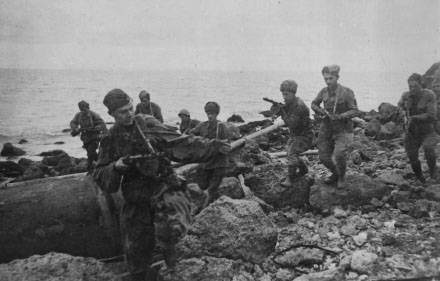
The strength, of course, is impressive. But with the outbreak of war, the position of the flotilla became unenviable. The movement of ships along the Danube and its tributaries was constrained by the fire of Romanian artillery, due to constant raids aviation every five to six hours, sailors had to change their parking places and constantly mask them. The supply was completely interrupted: in peacetime, fuel and ammunition arrived by sea from Odessa - along the coast to the mouth of the Danube and further upstream. Now, the Romanian destroyers bombarded the entrance to the river with mines.
Before the flotilla command, the question arose: what to do?
It was possible to follow the path chosen by many commanders of units of the Red Army in the early days of the war — to blow up equipment, burn warehouses and light, with only small arms, catch up with the front rolling back to the east.
But there was another option ...
Throw west
The ORDER did not receive the flotilla to break into Odessa or another naval base. This means, Rear Admiral Abramov argued, that he will have to fight where the war has found - on the Danube. But on the dominant heights of the right bank, the enemy dug in, from there he monitors the fairway and constantly fires the main support bases - Izmail, Renii, Kiliyu and Vilkovo. Consequently, in order to facilitate the actions of the ship detachments, it is necessary to reset it from there.
And the fact that for this purpose it was necessary to set foot on the territory of a contiguous state, the Soviet admiral was no longer confused: at midday on June 22 Romania officially declared war on the USSR ...
Cape Satul-Nou, thoroughly fortified by the Romanians, was chosen as the landing site. But the main problem was that the flotilla did not have the number of its own ground units necessary for such an audacious enterprise.
And then the NKVD troops came to the aid of the sailors: the commander of the 79 frontier detachment, Major Savva Grachev, unconditionally supported the admiral’s plan and quickly formed a joint company of volunteers, entrusting him to command Lieutenant Andrei Bodrunova. Soon the “green caps” was also joined by a platoon of border guard sailors led by Lieutenant Andrei Koschei.
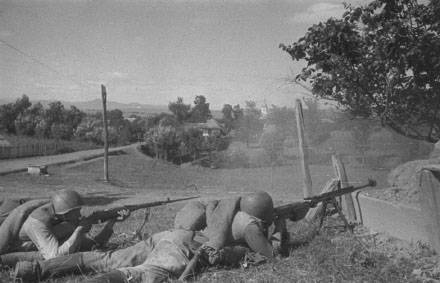
Preparations for the landing began on the second day of the war. June 23 held a preliminary artillery preparation: the coastal battery, along with the Martynov and Shock monitors, subjected the cape to intensive fire several times. And so that the enemy did not suspect anything, they also processed the neighboring sections of the Romanian coast at the same time, smashing access roads and several bridges with heavy shells.
June 24 in 2.30 armored with border guards at low speed out of the Kislitskaya channel and, after raising the breakers astern, rushed to the opposite shore. After twenty minutes, the first wave of paratroopers, joining the bayonets, rushed to the Romanian trenches. No minefields, no wire barriers - nothing was in front of them. Needless to say, the appearance of Soviet sailors and border guards was a complete surprise for the Romanians.
The Satul-Nou garrison did not show particular resilience: only in a few places it came to melee. For the most part, the Romanians preferred to surrender or scatter. As a result of the short battle, two Romanian companies ceased to exist, 70 soldiers and two enemy officers were captured. Losses of paratroopers - 10 wounded ...
When Rear Admiral Abramov was informed about the capture of the cape on the right bank of the Danube, he immediately contacted the commander of the 51-th Perekop Division, Major General Peter Gavrilovich Tsirulnikov, and asked for his support. A divisional commander who had gone through three wars did not have to explain for a long time the significance of the bridgehead on the enemy shore. In the operational order of the flotilla, the general immediately singled out the battalion of the 287 regiment of his division, which had defended Ishmael.
He was immediately immersed in the minesweepers, landed on Romanian territory and set about expanding the bridgehead. The Soviet infantry, with fire support of armored boats that marched in close proximity to the coast, advanced along the Kiliya arm downstream of the Danube. And this advance was rapid: by the end of 24 June, several villages, the large village of Pardina, the islands of Tataru, Bolshoi and Maliy Dallar turned out to be cleared of Romanian troops. In less than a day, the bridgehead expanded almost 40 kilometers along the front and 2 – 3 kilometers into the depths.
And the Soviet officers of the highest level — the flotilla commander, the commander of the frontier detachment and the commander of the rifle division — had already planned and began to prepare, as much as possible, the seizure of Old Kiliya - the city in enemy territory!
It was the third day of the war ...
Beat the enemy on his land
The seizure of the Romanian city was not an end in itself, and certainly not an act of intimidation. It was just that the flotilla still could not safely operate in the lower reaches of the Danube and secure access to the Black Sea. In addition, the Romanian garrison in Old Kiliya hung over the left flank of the formed bridgehead and could be used by the enemy for the accumulation of forces. Decided to eliminate this threat on the night of June 26.
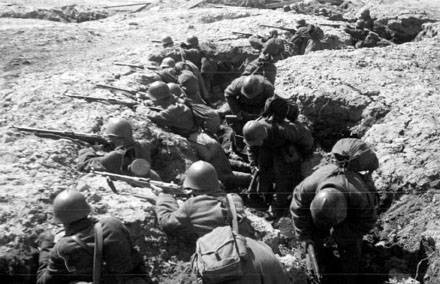
The main role in this enterprise was assigned to the 23 Infantry Regiment of the 51-th Perekop Division, which was to land on the right bank of the Danube with all three battalions. Despite the fact that the preparation of the landing remained less than a day, the army team approached it thoroughly.
The regiment commander Petro Sirota managed to find a place in one of the river branches with a similar outline of the coastline, bottom characteristics and coastal depths. Someone gives people a rest before the battle, and the captain, before dark, conducted two training sessions on boarding an armored boat, placing on them and unloading onto the shore ... Probably, therefore, the next night there was not a single drowned soldier, not one drowned in his regiment. machine gun.
While these trainings were going on, artillery and aircraft were solving their tasks. The flotilla squadron bombed several times on Romanian trenches in the area of Old Kiliya. By evening, the howitzer regiment of the 51 Division had arrived at the firing positions, and on the coastal batteries and in the gun towers of the river monitors, the ammunition was replenished. And with the onset of darkness, a storm of fire struck the Romanian coast.
Meanwhile, 14 armored troopers under the command of Lieutenant-Commander Ivan Kubyshkin, with a landing force on board, emerged from the canal overgrown with rushes a little higher than the city. They moved with the engines turned off - the paratroopers and sailors pushed off from the bottom in advance with prepared poles. Then, by self-rafting, acting with one rudder and trying to keep the shadow, the boats moved down the Danube, gradually choosing the middle of the river. And only when the gaps that danced on the outskirts of the city were visible, did the mechanics receive the command: “Full speed!”
The Romanians again missed the landing, having noticed the landing only when the boats were two or three meters from the coast. Soviet artillery moved the fire deep into the Romanian territory, on the surviving firing points began to work tower guns and machine guns armored. The battalion, headed by the regimental captain himself, Orphaned, landed without a loss! And from the left bank the river minesweepers and frontier boats with two other battalions of the regiment were already dumped.
Two hours later, Old Kiliya was captured. Romanians lost about 300 people killed, more than 700 surrendered. As trophies, paratroopers got eight 75-mm guns and about 3000 shells for them, 30 heavy machine guns and light machine guns, a little less than 1000 rifles, almost 100 000 ammunition, 416 anti-personnel and anti-tank mines, 340 grenades.
Regiment losses amounted to ... 5 dead Red Army soldiers and 7 injured! Of the sailors of the Danube military flotilla, not one died that night, only three armored boats were damaged in such a way that they were forced to go to their native coast in tow.
At dawn, active hostilities continued on the right bank of the Danube. As envisaged by the plan of the operation, the Soviet units moved towards each other, clearing the coastal territory and islands from Romanians. By the end of 26 on June, the flanks of the landings landed on 24 and 26 of June closed up, forming a single bridgehead of 75 kilometers along the front and penetrating the Romanian territory from 4 to 9 kilometers.
The fifth day of the war ended ...
Toughie
WHEN Marshal Antonescu, the Prime Minister of Romania and the conductor (leader) of the Romanian fascists, on the first day of the war reported that his valiant troops could not land on Soviet territory, he was saddened. But when 24 and 26 Jun came to report that the Bolsheviks themselves had entered the territory of Romagna Mare (Great Romania), the marshal was enraged. And ordered to immediately end with the insolent.
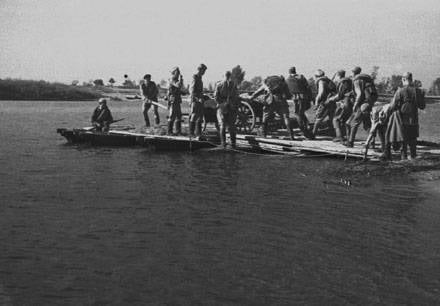
The first attempt was made by the Romanians 27 June: a whole regiment rushed to the position of Satul-Nou, who held the 30 border guards, armed with Mosin rifles, with two light and two machine guns. When the first attack choked, followed by the second, then the third and fourth, which was already preceded by artillery attacks. But the Romanian batteries immediately covered the naval and coastal artillery of the Danube military flotilla, and the frontier guards did not have to take ... As a result, the Romanian regiment, having lost a fifth of the soldiers in the evening, was forced to abandon further attempts to throw a handful of fighters in green hats into the Danube.
And Marshal Antonescu's fury gave way to panic: that evening he reported to Berlin that at least ten thousand Soviet troops had invaded Romania, and asked for an ally for help. At a meeting the next morning, Hitler allegedly asked the head of his military intelligence, Admiral Canaris, how much news from Bucharest correspond to reality? To which the “little admiral,” grimaced, replied that the Russians had somehow somehow crossed the Danube, but there are no more than a thousand of them, and the Romanians themselves can deal with this problem. After which the Führer proceeded to hear more pleasant reports from the eastern front. And Goebbels made the very entry in his diary ...
The fights for the Danube bridgehead only approached their apogee. June 28 The 2 and 3 battalions of the 23 regiment were withdrawn to the left bank. On the narrow strip of the right bank there were no more than two infantry battalions, two sailors platoons and a joint company of border guards volunteers. All these units moved into operational subordination of the flotilla.
For two days the Romanians fought almost uninterruptedly disturbing fire, simultaneously accumulating in the floods for a new assault. And 30 Jun made a second attempt to eliminate the bridgehead. The fierce battle again flared up at Cape Sutul-Nou, where the battalion of Captain Nicholas Turgan was now holding, with difficulty fighting off two Romanian regiments.
When the situation became critical, its chief of staff captain 2, rank Grigoriev, arrived at the bridgehead to coordinate the actions of the infantry, ships and aircraft of the flotilla. Assessing the situation, he, extremely risking, at his own risk and risk ordered the detachment of armored boats to leave the shelters, to approach the Romanian coast and with fire from the turret guns for visible purposes to support the bleeding infantry. At the same time, at the request of his chief of staff, Admiral Abramov raised the squadron of the Danube military flotilla into the air.
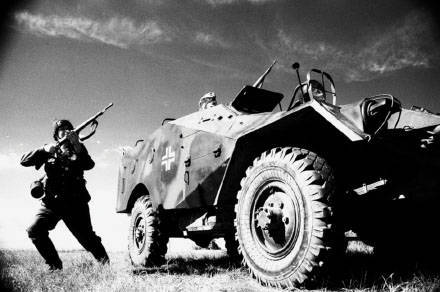
Her fighters successfully otturmovali on advancing Romanian chains. And then came the turn of the armored boats, which had to operate under fire from the enemy's heavy batteries. I rescued an unusual tactic: the boats took shelter from the shells under the high bank, then the pair jumped at full speed into the middle of the river, fired three or four shells at the Romanian infantry, and they were rushing back to the dead zone. Then, when Soviet fighters appeared in the air, the boats for some time took their breath away. And then again they continued their deadly merry-go-round.
This continued until Grigoriev reported to Rear Admiral Abramov that the situation on the bridgehead was restored and the enemy was no longer active ...
"Take the defense, sailors!"
AFTER the failure of 30 June, the Romanians three more times - 3, 4 and 6 July - attempted to do away with the Soviet bridgehead on the right bank of the Danube, these days, a total of eighteen times rushing to the attacks. All of them were repulsed with heavy losses for the attackers.
And on July 9, Chief of Staff of the 14 Infantry Corps Colonel Rybalchenko in a telephone conversation was stunned by Rear Admiral Abramov, saying that by order of the Southern Front headquarters, all army units were withdrawn from the Danube due to the difficult situation and the whole responsibility for the 90 kilometer section of the border was from Reni to the mouth of the river - now assigned to the flotilla. "In general, take the defense, sailors!" - the colonel cheerfully concluded his report before hanging up the phone. And literally an hour later, the intelligence service informed the commander of the flotilla that in the Tulchi area the enemy was concentrating up to 6 thousands of people for a new strike.
Instead of falling into despair, the sailors began to prepare to defend the bridgehead and repelling on their own the possible landing of Romanians on the Soviet coast. All the observation posts along the left bank of the Danube during the day were turned into strong points, in which they could keep the defense of the unit from the detachment to the platoon. On the ships were half crews. The rear services sent ashore all without whom combat work was possible. The Izmail fighter battalion of the NKVD, numbering about 600, hastily mobilized from the port workers and entered the flotilla. Another 150 soldiers were identified by the Izmail police, who, incidentally, continued to serve in the city all this time.
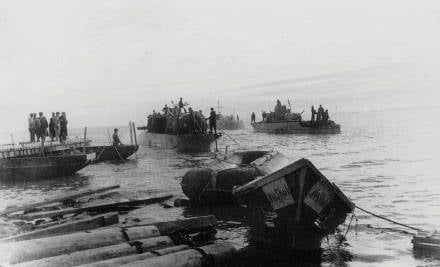
Thus, on July 10, with the permission of the headquarters of the Black Sea Fleet, during the Danube military flotilla, its own consolidated infantry regiment was formed, which was not provided for by the pre-war states. Its commander was appointed head of the air defense sector, Colonel Matveyev. During the day, he was able to carry out the coordination of units, to transport most of them to the bridgehead, where they took up defense. The batteries of the anti-aircraft artillery battalion were also placed in a new way - with the expectation of firing not only at air, but also at ground targets. The combat unit even became available in the coastal defense sector — four old three-inch riders mounted on horse gear ...
Believe it - believe it or not, but the sailors held on for many weeks a tiny bridgehead with these tiny forces, and at the same time stopped several attempts by the Romanians to cross the Danube.
And they even made a desperate attempt to destroy enemy batteries in the Periprava area. Alas, it ended in failure: the sabotage detachment of 25 Red Navy men, led by the Chief of Intelligence of the flotilla headquarters, Senior Lieutenant Zaitsev, was discovered by the enemy on his way to the coast and completely destroyed. Two armored troopers were killed along with the teams.
Left to return
The general situation on the southern front continued to deteriorate. In the afternoon of July 16, units of the 35 Infantry Corps left Chisinau. After him, he had to roll back to the Dniester and the 14 corps, which was threatened with encirclement. And in the evening of the same day, the Military Council of the Black Sea Fleet issued orders to the ships of the Danube military flotilla to break through into the Black Sea and go to Odessa. Coastal defense batteries and anti-aircraft gunners were supposed to follow the same land.
Began preparation for the evacuation. But even in this tense situation, the sailors managed to give the last slap in the face of the Romanians. Intelligence reported to Admiral Abramov that the enemy was accumulating in front of the Soviet town of Vilkovo, intending, apparently, to land on our shore. It would seem, well, what kind of business it is now - the order to retreat in your pocket ... But on the night of 18 July, the monitors Zheleznyakov, Martynov and Zhemchuzhin with a detachment of armored boats approached Vilkov. With the dawn, the ships and two coastal batteries set off a hurricane of fire at the established places of concentration of manpower and transport means. Called from Odessa and induced by the sailors, the bombers completed the rout. The blow was such a force that even a few days after the departure of the flotilla, the Romanians made no attempt to land on the Soviet coast, which remained completely defenseless ...
Evacuation of the Danube bridgehead was carried out no less brilliant than its capture and retention. The headquarters of the flotilla until the last minute did not inform the infantry units that they would leave the right bank. The leadership of the removal of the paratroopers and the responsibility for ensuring that not a single fighter is left on the enemy’s shore would be assigned to the 3 captain of the rank of Nikolai Balakirev. He was assigned to complete the task at midnight. For the collection of dispersed platoons and companies, their commanders were given no more than an hour. The calculation was based on stealth and surprise. But if the evacuation of the bridgehead was still discovered by the enemy, Balakirev had two monitors with their powerful artillery at their disposal.
The entire evening from the left bank along the Romanian positions in the usual mode was conducted a methodical fire, which did not cease even after dark. The armored boats that took the paratroopers aboard gradually and at different points approached the right bank so that it was similar to the maneuvering of the ship's night watch. The enemy was not alarmed anywhere, and already at 2 in the morning of the night “cap-3” Balakirev reported to Admiral Abramov that all the infantry units without loss and without delay were taken to the concentration points on the left bank. At dawn, they were consolidated into a single group under the command of the captain of the 2 rank, Frolikov, and went to Akkerman and Odessa in an organized column. They left to return in three years ... As soon as the landing was removed from the bridgehead, the ships of the flotilla went on a breakthrough into the Black Sea. The command and headquarters of the flotilla were on the monitor "Shock". Behind him, on the run, lining up in a marching order, the rest moved - the entire 101 pennant. By the end of the day 18 July 1941, the Danube military flotilla consisted of so many combat units, including gliders and staff communications light boats.
We moved in several groups, so as not to create a continuous hum of machines, and with large intervals within each, so as not to converge into a single target for the coastal batteries of the enemy. On the approach to Periprave, where the Danube fairway narrowed to 300 – 350 meters, all the motors were turned off. And the ships held by the rudders bore forward only over ...
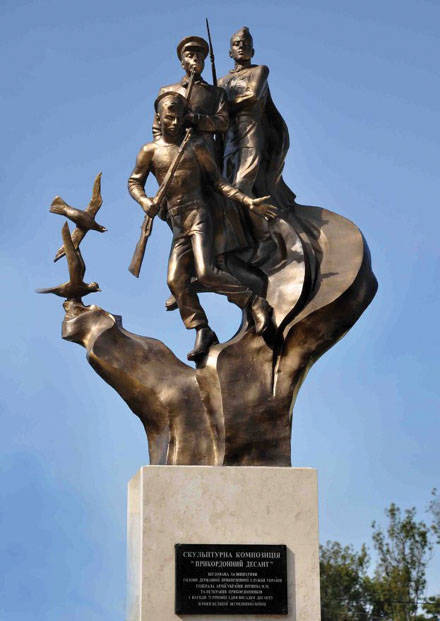
The Romanians were able to detect only the rear guard of the flotilla. And, in revenge for their mistake, they brought down the full power of six coastal batteries. The fire was dagger-like: thirty-six 152-mm guns literally sweep through the river. In this hell, an armored trooper, covering the closure group, darted around the very Romanian coast, setting up a smoke screen and leading such an intense artillery and machine-gun fire as they were capable of. The BK-133 died in this unthinkable voltage bout with the crew, about a dozen ships were seriously damaged and had crew losses.
But the flotilla still escaped from the Danube. In its delta, sheltered in the reeds, she spent the whole morning preparing for the sea crossing. Around noon 19 July, it was already off the coast of the Black Sea, met by the cruiser "Comintern" and several destroyers, who ensured the safe passage of river vessels to the Odessa naval base. And in 9 hours 16 minutes 20 July, all the ships of the Danube military flotilla - 100 pennants! - moored at the walls of Quarantine Harbor in Odessa.
The first month of the war was ending ...
Information